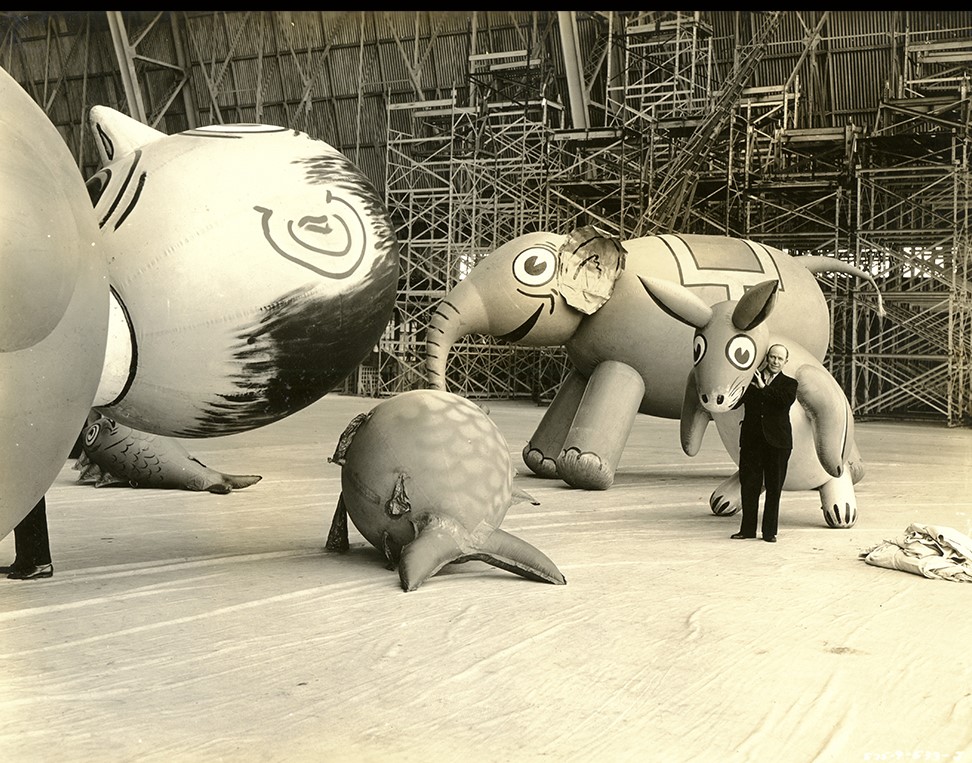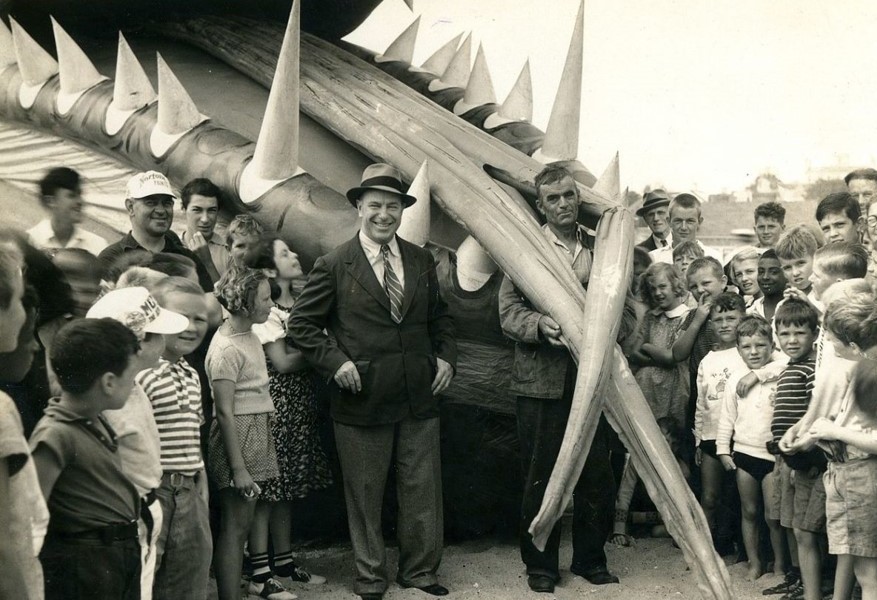Don’t be alarmed by the 30-foot sea monster outside of the Norman Rockwell Museum — it’s the new, inflatable staff member greeting visitors coming to explore the museum’s latest exhibit, “Tony Sarg: Genius at Play.”
The museum is showcasing the largest exhibition of Tony Sarg, an illustrator, puppet master, pioneer in animated films and the designer of the first Macy’s Thanksgiving Day Parade balloon, on display through Nov. 5.
“Tony Sarg: Genius at Play” is named as such because humor was a central tenet to Sarg’s work, a lifelong collector of toys who eschewed a military career in Germany to pursue art first in Britain then in America. The idea of play became a guiding force for co-curators Stephanie Haboush Plunkett, deputy director and chief curator for the Norman Rockwell Museum, and Lenore D. Miller, curator emerita of the George Washington University Museum in Washington, D.C.
“We both wanted to convey that sense of joy that he always expressed in his work and wanted others to feel it,” Plunkett said. “We wanted to try to find a way that made it feel as though Tony Sarg had come to life in the galleries through all of his diverse projects and activities and all of the unique visionary projects that he undertook.”
The exhibit includes an interactive shadow puppetry display, toys, marionettes, original drawings, children’s book illustrations, commercial products and ephemera from Sarg’s theatrical and commercial career. Archival photographs capture the massive balloons he designed for Macy’s, and the 30-foot inflatable monster outdoors is a one-third replication of a balloon Sarg designed in an elaborate ruse, fooling residents of Nantucket into believing a sea monster was stalking their shores.
“I think that the fun part is the way he approached his craft as if he was enjoying every minute of it,” Miller said. “We tried to get that expressed in the design of the exhibition, which is extremely colorful, fun and engaging.”
While he was alive, Sarg became a popular culture fixture in the early 20th century. His puppeteering legacy includes Muppets creator Jim Henson, who was a student of Sarg’s protege Bil Baird. Giant, floating balloons are a longstanding iconography of Macy’s annual parade. Yet Sarg’s story was largely unknown and in danger of disappearing, the curators said.
“He was so famous in the ’20s and ’30s that it’s hard to believe that someone who was so well known, who had his face on advertisements, could really ever be forgotten,” Plunkett said.
In 1942, Sarg died from appendicitis complications at age 61, three years after declaring bankruptcy. Because he didn’t have a central advocate, his work was dispersed, Plunkett said. Some marionettes went to Sarg’s staff as payment, others were sold and his daughter gave a large collection of his work to a Nantucket thrift shop. Some collectors bought large quantities from the shop, helping keep Sarg’s work together, but other individual works were sold in auctions or at galleries.
While a number of his pieces have since been donated to the Nantucket Historical Society, which was a major lender for the exhibit, Miller and Plunkett had to do some sleuthing to find more of Sarg’s puppets and illustrations. Finding the marionettes proved especially challenging, but the two managed to put together the largest group of Sarg’s exhibited in one place.
“Puppets are somewhat expendable,” Miller said. “It was amazing to find that there were some really important puppets in existence.”
Plunkett even managed to track down Sarg’s great-nephew, currently living in Australia, who gifted an early watercolor to the museum and shared personal stories of the artist that were passed down through family.
When Plunkett and Miller were researching Sarg, the only published academic work chronicling his life was a thesis published by Tamara Hunt that focused largely on his work in puppetry. The duo turned to old passports and other archival material to learn about his early life. A published catalog co-authored by the curators accompanies the exhibit.
“Now we have this amazing and wonderful book with essays by various commentators that sheds light on important aspects of a wider breadth of his career,” Plunkett said. “It does feel a little bit like magic that we somehow got that done, and now it will live on.”
Katherine Kiessling covers arts and entertainment for the Times Union. The New Jersey native has written for syracuse.com, Central New York Magazine and Charleston City Paper. You can reach her at katherine.kiessling@timesunion.com.
















